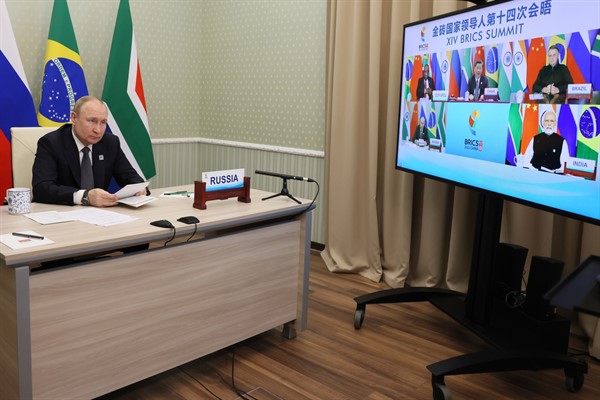In what were hailed as the “two most productive summits in years,” the Group of 7 and NATO held their annual leaders’ meetings last week in Germany and Spain, respectively. The G-7 summit concluded with the leaders emphasizing and enhancing their support for Ukraine in its war against Russia, agreeing on measures to combat climate change and announcing a Partnership for Global Infrastructure and Investment, seen as a direct counter to China’s development program, the Belt and Road Initiative. As for the NATO summit, it witnessed the entry into the alliance of two new members, Finland and Sweden, as well as the adoption of a new agenda-setting document, the Strategic Concept, and a promise to bolster its combat readiness in Eastern European member states.
Clearly, these Euro-centric institutions—the U.S. and Canada being the only NATO members from outside Europe, and Japan joining them for the G-7—did indeed have busy agendas. But one could reasonably argue that the most significant summit of late June was not held in the German Alps or Madrid, nor was it attended by any of the core G-7 members. Instead, it was the virtual BRICS summit held the day before the G-7 leaders met, on June 23. As Akhil Ramesh of the Pacific Forum observed when comparing the BRICS summit to the G-7 meeting, “the groupings couldn’t be more contrasting.”
The BRICS grouping—an acronym for Brazil, Russia, India, China and South Africa—started meeting in 2009 as a loose association of prominent “emerging market” economies. Like the G-7, which was originally the G-5 when it first formed in 1975, the BRICS began as BRIC, with South Africa joining in 2011. And at its origin, it was a largely informal economic association geared toward helping its member states coordinate their monetary and trade policies. But also like the G-7, the organization’s remit evolved and expanded over time.

